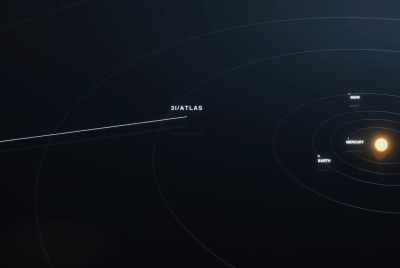Nearly Half of California Faults Overdue: Could LA Be Next?
New study reveals 45% of California's major faults are behind schedule for major earthquakes, raising alarm over Los Angeles' seismic readiness

A groundbreaking international study has uncovered that 45 per cent of California's major earthquake faults have exceeded their average rupture timelines—a stark contrast to other seismically active regions where only 9 to 18 per cent of faults are similarly 'overdue.'
The comprehensive research, published in Geophysical Research Letters, analysed 890 prehistoric and historic earthquakes across 210 faults in California, Japan, Greece, New Zealand, and the Basin and Range Province. The findings place particular scrutiny on Los Angeles, where multiple fault systems converge near dense urban populations.
Scientists in study in question examined geological records spanning up to 80,000 years, with California's paleoearthquake evidence extending back approximately 5,000 years. This extensive timeline enabled researchers to calculate average intervals between major ground-rupturing events with unprecedented accuracy.
The San Andreas System Under Scrutiny
The San Andreas Fault, notorious for its rapid slip rate exceeding 10 millimetres annually, features prominently amongst the overdue systems. However, researchers warn that smaller, lesser-known faults threading through the Los Angeles metropolitan area pose equally significant threats.
'The faults slip on their own schedule and for their own reasons,' explained Glenn Biasi, a geophysicist with the US Geological Survey who was not involved in the study. His observation underscores the inherent unpredictability of seismic events despite mounting geological pressure.
Lucy Jones, a renowned seismologist at Caltech, cautioned against misinterpreting the findings: 'Overdue doesn't mean anything for quakes.' Her statement emphasises that whilst stress accumulates along fault lines, predicting the precise timing or location of future ruptures remains beyond current scientific capability.
Global Patterns Emerge
The international scope of the research provides crucial context for California's anomalous status. Whilst most global fault systems show elapsed times shorter than their mean recurrence intervals, California's transform fault system—dominated by the interconnected San Andreas network—exhibits distinctly different behaviour.
Researchers found that 85 to 100 per cent of historic earthquakes across all studied regions occurred within a factor of two of their mean recurrence intervals, with most happening before reaching the average timeline. This pattern suggests earthquakes typically strike as faults approach, rather than exceed, their expected cycles.
The disparity in California may stem from its unique geological architecture. Unlike other regions studied, California's fault system comprises numerous interconnected, fast-moving segments forming a major plate boundary. These segments may experience synchronised periods of activity and quiescence due to complex stress interactions.
Implications for Urban Preparedness
Katherine Scharer from the USGS praised the study's comprehensive approach as 'a tremendous amount of work' that will enhance future earthquake forecasting capabilities. The aggregated data provides invaluable insights for refining seismic hazard models.
For Los Angeles and surrounding communities, the findings underscore the critical importance of earthquake preparedness. Whilst scientists cannot predict when the next major event will occur, the higher percentage of overdue faults necessitates renewed focus on infrastructure resilience and emergency planning.
State and local authorities may need to accelerate retrofitting programmes for vulnerable buildings, enhance emergency response protocols, and expand public education initiatives. The study's revelations, whilst not forecasting imminent disaster, certainly elevate the stakes for comprehensive earthquake preparedness across Southern California's dense urban corridors.
The Path Forward
As researchers continue unravelling the complexities of fault mechanics, the study provides a sobering reminder of California's unique seismic challenges. The state's earthquake system remains inherently unpredictable, yet the growing evidence of widespread fault dormancy demands heightened vigilance.
Scientists emphasise that 'overdue' status does not guarantee immediate rupture—some faults in the study exceeded their average cycles by factors of two to five without producing earthquakes.
Nevertheless, the statistical anomaly of California's fault behaviour compared to global patterns warrants serious consideration by policymakers, urban planners, and residents alike.
The research team's methodology, comparing both 'open' intervals (time since the last earthquake) and 'closed' intervals (complete cycles between historic events), offers new tools for understanding earthquake timing patterns. These insights may prove invaluable as California navigates the delicate balance between appropriate caution and unnecessary alarm in its ongoing coexistence with seismic risk.
© Copyright IBTimes 2025. All rights reserved.





















